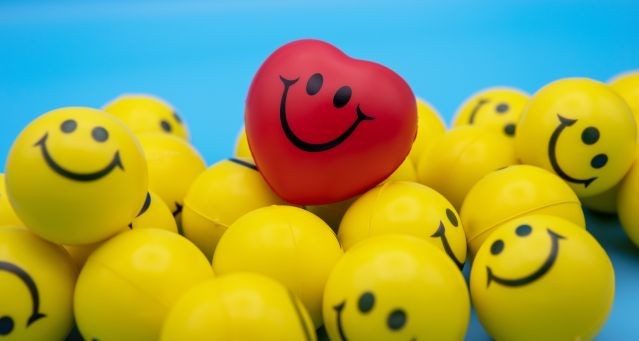Workplace Dynamics
Emojis in the Modern Workplace: A Psychological Perspective
Reducing miscommunication and fostering camaraderie, one emoji at a time.
Posted July 17, 2023 Reviewed by Kaja Perina
Key points
- Emojis aid in efficient and nuanced communication, speeding up workplace conversations.
- Custom emojis can minimise cross-cultural or generational misunderstandings, promoting a shared language.
- Emojis play a vital role in expressing solidarity and creating emotional connections in remote work settings.
- Proper emoji use requires context understanding, moderation, and adaptation.
From a terrain that was predominantly dominated by traditional face-to-face meetings and lengthy email threads, we have transitioned to a realm that embraces a colourful, efficient, and expressive method of communication using emojis.

A systematic review of literature reveals that the use of emojis is a way to convey emotional states that can be difficult to express in words. The advent of this form of communication has enabled us to get our point across more effectively, engage in meaningful conversations quickly, and break down barriers faster than ever before. It allows us to communicate ideas, feelings, and experiences without having to rely on traditional modes of communication. Moreover, by using the same symbols and imagery in our online conversations, we are able to achieve a degree of consistency that is not always possible with verbal communication.
According to a study by Slack and Duolingo, over half of the respondents agreed that the introduction of emojis in their daily conversations accelerated the pace of their discussions and introduced nuance to their communication. Emojis, also known as "Reacjis" in the Slack parlance, have become the ultimate shorthand for a plethora of messages, from denoting the completion of tasks to signifying agreement, thereby enhancing both efficiency and clarity in communication.
In addition to promoting efficient communication, emojis foster a sense of camaraderie and unity among coworkers. This was demonstrated during the initial stages of the pandemic when Slack employees used the ❤️ emoji to express solidarity and emotional support. This unspoken expression of shared sentiments often helps bridge the emotional gap created by virtual meetings and emails, leading to the creation of a shared emotional language among coworkers.
The Double-Edged Sword of Emojis
Despite the evident advantages of emojis, they are not without challenges. Misinterpretations stemming from generational differences and cultural nuances can disrupt the smooth flow of communication, according to research. One notable instance is the ongoing debate between Millennials and Gen Z over the interpretation of a simple smiley emoji: Is it content, cheeky, or mocking? Such miscommunications can quickly snowball into larger problems affecting team morale and productivity.
Another aspect of emojis that is often overlooked is the emotional context they bring to conversations. While lighthearted emojis like laughing faces are usually intended to inject fun into a discussion, some people might find them inappropriate in certain contexts. Similarly, emojis that are meant to be humorous can come across as condescending or dismissive if used in the wrong context.
In response to these challenges, many teams are opting to create custom emojis. This innovative approach involves developing a shared visual language based on common workplace experiences, which goes a long way in enhancing communication efficiency and minimising misunderstandings. For example, a team might develop an emoji for when someone makes a typo or misses a deadline. This allows everyone to recognise the humor and express camaraderie without having to worry about offending any individual in the process.
Context, Moderation, and Emoji-Free Zones: Finding the Balance
The use of emojis in professional communication requires a keen sense of context. Just like words, emojis carry different connotations depending on the situation they are used in. A smiley emoji at the start of a conversation could denote friendliness and approachability, but an ambiguous emoji at the end might generate uncertainty and confusion.
In addition to understanding the context, moderating the use of emojis is also essential. While emojis can add color and character to a conversation, excessive use of them can dilute the primary message or may come across as unprofessional. It's advisable to limit the use of emojis to two or three per conversation, ensuring the focus remains on the message and not on the symbols used. It's also crucial to recognise that certain scenarios warrant a strictly professional tone, void of any emojis. Formal documents and emails are prime examples of these situations. Unless explicitly specified by the organisation's culture, it's best to refrain from using emojis in formal communications. Remember, the psychological impact of different symbols varies from person to person, so it's best to keep conversations professional and keep the use of emojis in moderation.
Adapting to the Dynamic Digital Landscape
With new emojis continuously entering the digital lexicon and existing ones acquiring new meanings, staying updated is vital. This requires continuous learning from colleagues well-versed in the emoji language or digital communication experts: both of which can provide valuable insights and help you avoid any potential miscommunication.
Overall, the use of emojis in professional conversations should be approached with caution and care. When used with purpose and moderation, emojis can add a personal touch to a conversation, helping foster relationships and creating an environment of trust and understanding. Just remember: don’t overuse emojis, use the right emoji for the situation and always keep your messages professional.
The digital landscape is constantly changing, but with a little bit of research and practice, you can master the language of emojis in no time! So get creative with your conversations and see where it takes you.




